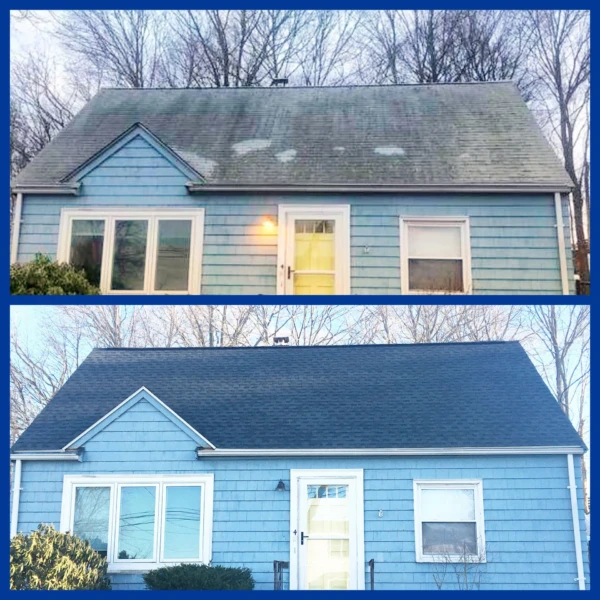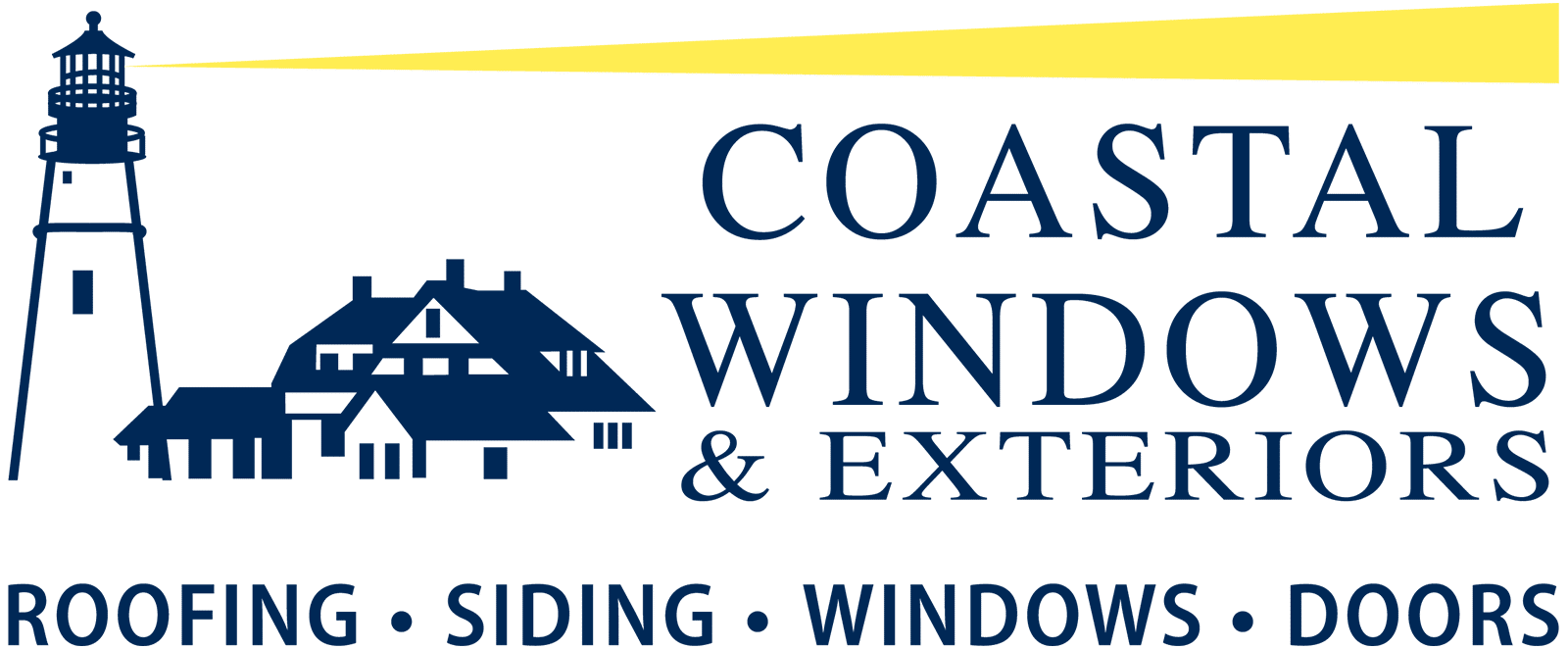It comes in streaks and patches. It even comes in different colors. If your neighbors have it in their home, you might have it, too. Unfortunately, we aren’t talking about the next greatest exterior design trend.
We are talking about algae on your roof!
Algae on your roof creates an unsightly appearance, but it is more than just a cosmetic concern. It spreads by being carried in the wind, which can result in a neighborhood of algae-covered roofs. Yikes!
algae on your roof

What’s worse is that algae on your roof can be quite damaging to the shingles, eventually resulting in deterioration.
If you have algae on your roof, it’s time to take action.
Our latest promotion
What is Algae?
The black “stains” on your roof are actually large colonies of airborne algae called Gloeocapsa Magma (Cyanobacteria). They affix themselves and eat away at the limestone filler found in shingles. As they eat and grow, they readily reproduce into more algae.
Eventually billions of individual alga cover the entire roof surface; destruction to your roof system will gradually occur over time, potentially leading to premature replacement of your roof. You may also hear the term Lichens which are complex organisms formed by a symbiotic relationship between a fungus and an algae. Let’s get our science on…
Whereas algae typically grow in aquatic or very moist environments, lichens can grow on nearly any surface—especially rocks—or as epiphytes on plants. When green growth appears on your roof, it’s usually moss or lichen. These organisms destroy your shingles by retaining moisture and accelerating deterioration, which ultimately reduces the lifespan of your roof.
As wind, rain and snow will not dislodge them. Lichen is an organism that evolves from the algae having a symbiotic relationship. Algae is a type of aquatic plant without stems or roots. It is found all over the world and it produces 70% of the air that we breathe. There are also microscopic variations of algae.
Like other types of plants, algae grows through a photosynthesis process. It needs sunlight and CO2 to survive. Nearly all algae variations are self-sustaining and create their own food from sunlight and CO2, except for one type of species.
This type of algae is what you will find on roofs, otherwise known as heterotrophic algae.
Airborne algae causes the BLACK STREAKS on your roof. Air currents carry these spores to your roof and are called Gloeocapsa Magma. They eat away at the limestone filler found in shingles and reproduce into more algae which causes destruction to your roof system potentially leading to premature replacement of your roof.
What Does Algae Look Like?
As we mentioned, algae on your roof can take on different forms.
what does algae look like?

Some of the most common ways you’ll find algae on a roof includes black streaks and white patches. While they might look different from one another, they are both indeed algae and are damaging to your roof.
However, you can see algae in other colors. There is blue-green algae, red algae, brown algae, and green algae. Blue-green is the most common for roofs.
What Causes Algae to Grow on Your Roof?
Algae grows on your roof for several reasons. These reasons include:
- Warm temperatures. A University of Kentucky study discovered that algae grow best in temperatures around 86 degrees Fahrenheit. Remember that your roof has direct contact with sunlight, where roof surface levels can reach over 140 degrees Fahrenheit.
- Rising humidity levels. Algae on the roof is typically a spring and summer problem when relative humidity levels rise.
- Roof shingles that use limestone as a filler. Algae feed off of rocks, particularly limestone. Very old shingles that contain this filler are most susceptible to algae growth. Algae that feed off of limestone forms irregular bands and patches, which is what you will find on your roof.
Is Algae Dangerous To Your Roof?
Yes, algae can cause irreversible damage to your roof over time. That’s because the algae are eating away at your shingles so it can survive. If left untreated both will eat away at your roof granules and will permanently “scar” your shingle surface.
Furthermore, algae are deemed dangerous for roofs as well as gutters for other reasons such as:
- Holding moisture which collects on the shingles which can promote premature rotting
- Granule loss causes the shingle to break down
- When the shingle breaks down, the bond between the shingle and the roof can detach which results in shingle loss
- The granule loss can eventually pile up in your gutters and cause clogs
- Clogged gutters lead to extensive foundational problems, including cracks, pooling water, and flooded basements.
How to Prevent Algae on Roof
The good news is that Gloeocapsa magma is both treatable and, if you plan ahead, preventable.How do you make sure algae won’t grow on your roof? There are several ways that you can prevent this from happening.
Choose roofing shingles that contain copper granules such as GAF StainGuard Shingles.
Treatment: If you choose to treat an existing roof with algae, use safety gear and follow best practices for cleaning. The Asphalt Roofing Manufacturers Association recommends using a solution of 50/50 chlorine bleach and water. Be sparing if you use this option, as aggressive cleaning solutions can strip or damage the shingles. Definitely do not use any pressure washing systems as they can damage the shingles. It is also not recommended to use copper and zinc strips since algae doesn’t rely on rain to find moisture.
Preventative: The MOST effective preventative is copper-containing granules like those found in GAF StainGuard Shingles (internal link) as this enables the distribution of copper ions any time the roof is moist and is part of the GAF Timberline HDZ shingles you see here on this house in this post. Unlike older technology that concentrates the copper in a layer, StainGuard Plus uses specially engineered capsules infused throughout with thousands of copper microsites. Copper remains within reach, ready to be activated to help protect your roof against blue-green algae stains and is guaranteed for 25 years!
Regular roof maintenance can also help discourage algae growth:
- Trim tree branches back to allow more sunshine and reduce debris.
- Clear existing debris from the roof with a leaf blower or other non-abrasive method.
- Keep gutters clean to avoid water build up.
If you’re going to the effort and expense of installing a beautiful new roof, it makes sense to protect that investment against ugly algae stains by choosing GAF shingles with StainGuard® protection.
before and after photo of roof with and without algae

Algae on Roof Eats Your Shingles
If algae is eating at your shingles, it’s time to take prompt action. Our GAF Roofing systems are designed to help keep your roof free from algae, even during the hottest and humid months in our region. Contact us today to get a free estimate!
Resources:
https://blog.gaf.com/blue-green-algae/
https://hyperphysics.phy-astr.gsu.edu/hbase/Biology/autotroph.html
https://uknowledge.uky.edu/cgi/viewcontent.cgi?article=1002&context=bae_etds
https://sentryroof.com/news/how-hot-does-your-commercial-roof-really-get-in-the-summer/
https://www.asphaltroofing.org/algae-moss-prevention-cleaning-asphalt-roofing-systems/





